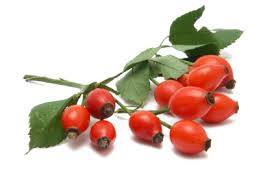Essential oils are natural aromatic compounds found in the seeds, bark, stems, roots, flowers, and other parts of plants. They can be both beautifully and powerfully fragrant. If you have ever enjoyed the gift of a rose, a walk by a field of lavender, or the smell of fresh cut mint, you have experienced the aromatic qualities of essential oils. In addition to giving plants their distinctive smells, essential oils provide plants with protection against predators and disease and play a role in plant pollination.
Essential oils are non water-based phytochemicals made up of volatile aromatic compounds. Although they are fat soluble, they do not include fatty lipids or acids found in vegetable and animal oils. Essential oils are very clean, almost crisp, to the touch and are immediately absorbed by the skin. Pure, unadulterated essential oils are translucent and range in color from crystal clear to deep blue.
Try this at home: Squeeze the peel of a ripe orange. The fragrant residue on your hand is full of essential oils.
In addition to their intrinsic benefits to plants and being beautifully fragrant to people, essential oils have been used throughout history in many cultures for their medicinal and therapeutic benefits. Modern scientific study and trends toward more holistic approaches to wellness are driving a revival and new discovery of essential oil health applications.
Profiles of Essential Oils & Carrier Oils
Essential Oils
Carrier Oils
When essential oils are used for massage, they need to be mixed into a base or 'carrier' oil as they are far too powerful and concentrated to be used on the skin undiluted. The carrier oil also provides the lubrication needed for the therapist's hands to move freely over the patient's skin.
A carrier oil can be almost any unperfumed vegetable oil, such as soya, safflower or sunflower oil, though those most often used for aromatherapy are sweet almond oil and grape seed oil. Sesame seed oil is sometimes used, and has the advantage of washing out of sheets, towels and overalls easily.
Most carrier oils are used simply for lubrication, but a few have therapeutic properties of their own, which can be chosen to complement those of the essential oils used with them. For example, peach kernel, apricot kernel and particularly avocado oil are all rich and nourishing oils which help dry and aging skins.
Olive oil has many valuable healing properties, though its disadvantage from the aromatherapist's point of view is its strong characteristic odour which persists even when essential oils are added to it. Wheatgerm oil (rich in Vitamin E) is an anti-scarring agent used to reduce scar tissue after injury or operations and also facial scarring caused by severe acne. It is a rather sticky oil and so does not act as a lubricant and needs to be added to one of the more free-flowing oils, usually in the ratio of 25% wheatgerm to 75% almond or other oil. Wheatgerm is also a natural antioxidant which helps to prevent other oils from becoming rancid (i.e., oxidising). If it is added in small amounts (up to 10%) it will improve the keeping ability of any other oil by a month or two.
All carrier oils oxidize sooner or later after being exposed to the air, and become unfit for use, so it is not a good idea to blend essential oils into them in any quantity. The best method is to mix only as much as you will use for one treatment.
Essential oils are most often mixed with a carrier oil in the proportion of 3% essential oil to carrier oil. A simple way to calculate this when mixing small amounts is to count 3 drops of essential oil to each 5 mis. of carrier oil, using a 5 ml. measuring spoon. Most of the suppliersof essential oilsalso stock carrier oils, though you can buy many of the more common ones from healthfood shopsor grocers. If you do so.be certain that they are of good quality, preferably cold-pressed and contain no additives of any kind.
Copyright 2020 - Aromareiki/Aromasana Inc. LLC - All rights reserved / Disclaimer /Legal Notice

